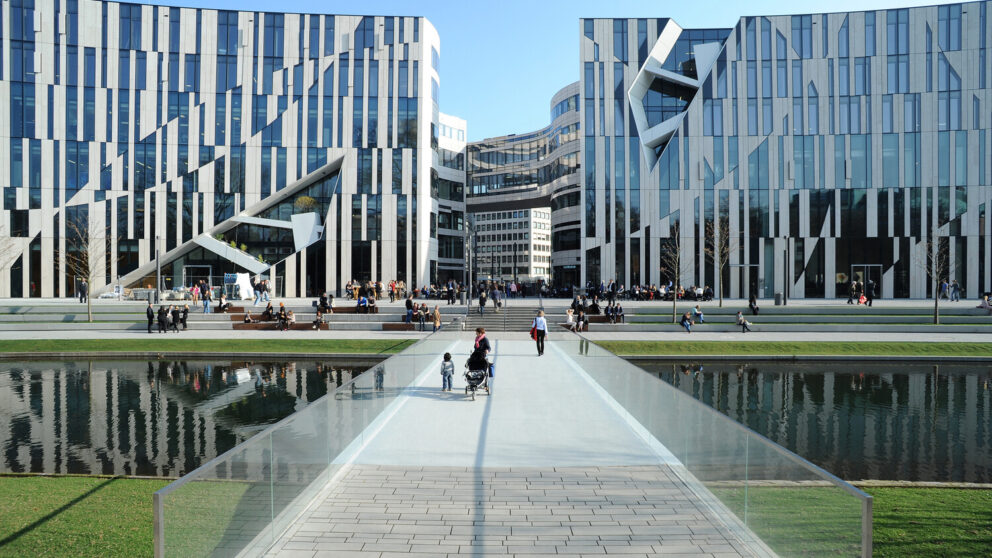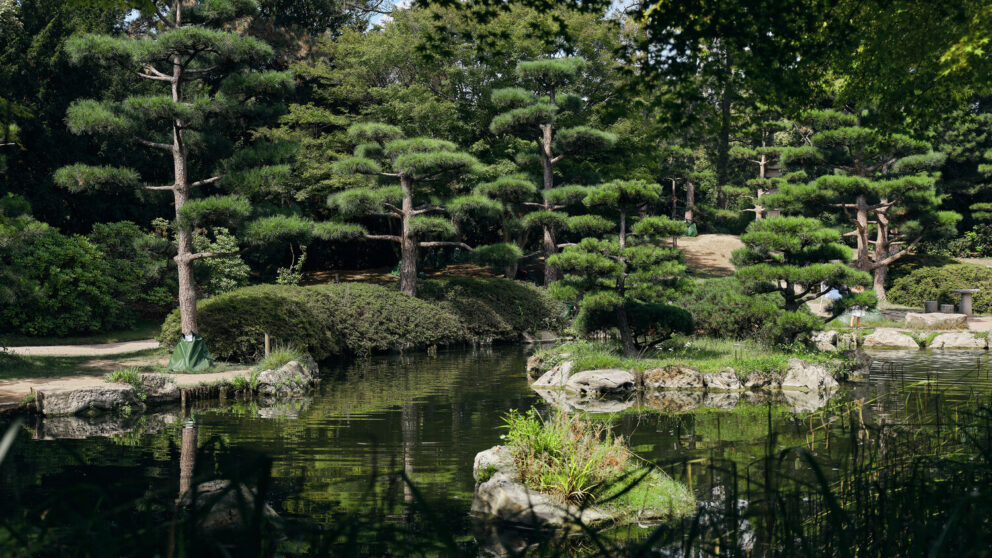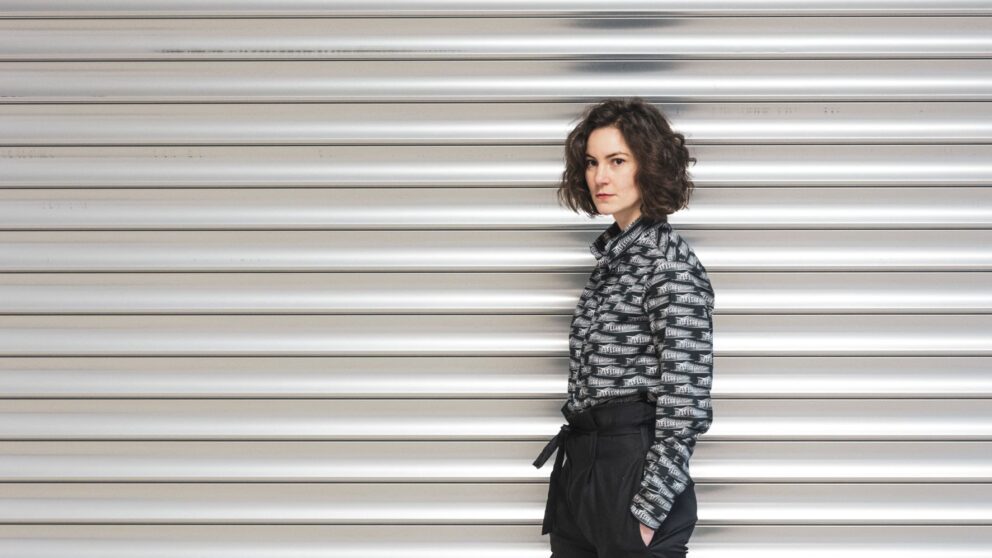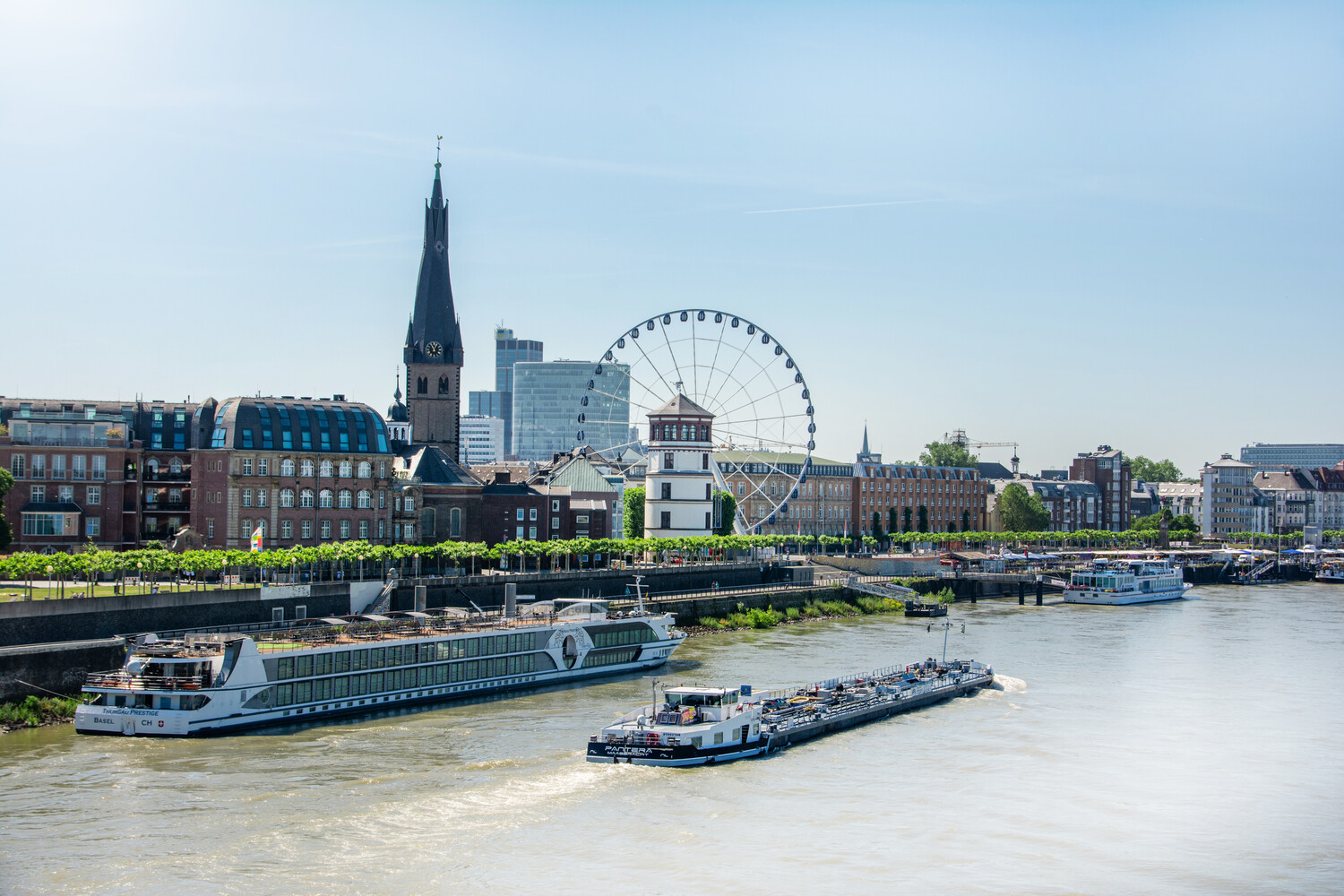
Six places that will always remind you of Düsseldorf
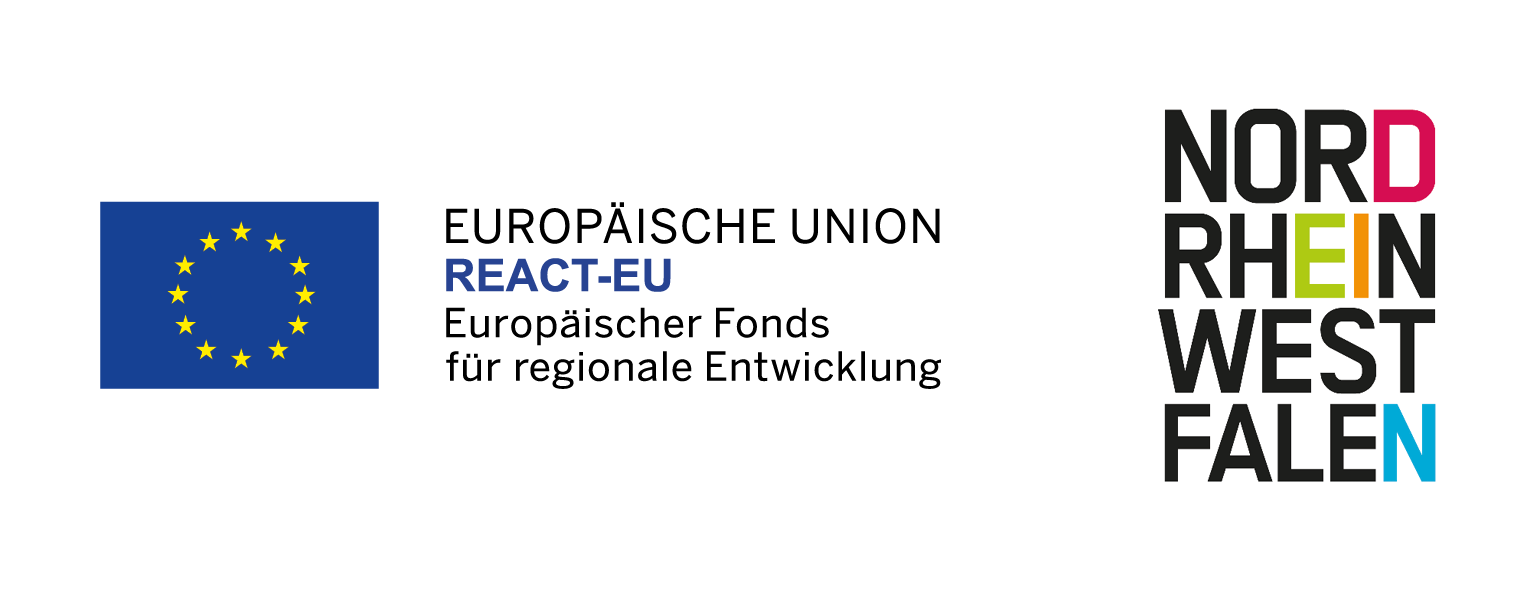
Six places that will always remind you of Düsseldorf
A wealth of architectural icons
Düsseldorf has plenty of architectural gems, and the list is growing all the time. The six that we have chosen here have proved a hit with locals for all kinds of reasons.
St Lambert’s basilica
St Lambert’s is one of the signature buildings in Düsseldorf’s Altstadt (Old Town). The triple-nave hall church was founded in 1288, the year in which the city was granted its charter. And the celebration that marked its consecration evolved over the years to become today’s popular Rheinkirmes funfair and beer festival. The church was originally built in the Lower Rhine brick Gothic style. Its current iconic appearance is the result of a fire in 1815 that destroyed the spire. It is thought that the wood used during the renovation was too fresh and too damp, causing the roof to become twisted. According to legend, however, the devil twisted the tower when he tried to rip up the church.
Rhine Tower
The Rhine Tower is not only Düsseldorf’s most famous landmark but also the most fun. Climbing the 168 metres to the viewing platform in a lift moving at a speed of four metres per second, and then floating up another 4.5 metres to the floor that now houses the restaurant Qomo, is an experience in itself. But it doesn’t end there. At this lofty height, the Düsseldorf cityscape passes you by in the 72 minutes that it takes for the restaurant to rotate once on its axis, while you tuck into delicious sushi or marbled Wagyu beef. You can also enjoy a sundowner in Bar & Lounge M 168, situated on the observation deck. Düsseldorf’s tallest building, with a total height of 240.5 metres, was built between 1979 and 1982 as a television tower. There’s no better place from which to spot the city’s geographical features, including MedienHafen, the Old Town, Hofgarten Park, Königsallee and the Rhine with its series of bridges. Enjoy a bird’s eye view of beautiful Düsseldorf.
Kuhna wall
The Kuhna wall, which adjoins the Rhine embankment steps on the right and left, is no less recognisable thanks to hundreds and thousands of colourful, shimmering dots of colour. The work is officially entitled Rivertime. Artist and art professor Hermann-Josef Kuhna and his students painted the original mural in 1997, creating an infectiously cheerful effect on the side walls of the steps on Burgplatz and the adjacent Rhine wall. 20 years later, parts of it were dirty and smeared, making it less endearing. Kuhna himself suggested replacing the acrylic paint with ceramic tiles in order to prevent any future vandalism. In 2017, Rivertime was restored in accordance with this suggestion, transforming it from a mural into a mosaic. The artist died shortly afterwards. His work will now live on for a long time and is all the more beautiful thanks to the sheen of the ceramic tiles.
Buildings on Gustaf-Gründgens-Platz
Düsseldorf Schauspielhaus, Dreischeibenhaus and Kö-Bogen II
The facade of the Düsseldorf Schauspielhaus theatre is unmistakable with its gleaming white, organic curves. It was built between 1965 and 1969 to plans by Düsseldorf architect Bernhard Pfau, whose design won out over that of famed Los Angeles architect Richard Neutra. In terms of looks, the building is the antithesis of the neighbouring Dreischeibenhaus, a 1960s skyscraper symbolising Germany’s post-war economic miracle. Consisting of three offset elements with a modernist glass and steel construction, the Dreischeibenhaus stands 94 metres tall – a dizzying height by the standards of its time. Its progressive design enabled architects Helmut Hentrich and Hubert Petschnigg to make an international name for themselves, and the building has lost none of its modernist appeal to this day. In fact, the revamp of Gustaf-Gründgens-Platz between the Schauspielhaus and Schadowstrasse by renowned Düsseldorf architectural firm Ingenhoven has made the surrounding area more attractive. New additions include a market hall with a publicly accessible lawn on the roof that is modelled on New York’s Lincoln Center and, opposite, a block of buildings with eight kilometres of beech hedges forming a stepped wall, Kö-Bogen II. The architectural trio formed by the Dreischeibenhaus, the Schauspielhaus and Kö-Bogen II has been enthusiastically welcomed by the people of Düsseldorf. And it’s all very instagrammable!
Gehry buildings
A masterpiece that has become almost a symbol of modern Düsseldorf, Neuer Zollhof by US architect Frank Gehry embodies the structural transformation of Düsseldorf’s docklands and the architectural awakening of the city. This expressive ensemble of buildings joined the list of Düsseldorf’s landmarks just in time for the start of the new millennium. Gehry created three sculptural, organically shaped buildings that defy all geometry and also differ in terms of materials, height and design aesthetic. The exterior of each of the three buildings could not be more contrasting, consisting of clinker brick, stainless steel and gleaming white plaster. But Neuer Zollhof is not just worth a visit for its architecture as it also boasts two fantastic restaurants on the ground floor, Meerbar and Rocca 800°C.
Ferris wheel
Like the carnival, the funfair is a firm fixture on the calendar for party-loving Düsseldorf. The locals’ eyes light up in July when they spot the huge trucks arriving on the Rheinwiesen meadows and Oberkassel embankment opposite the Old Town before the fair is set up. The next ten days sees the Ferris wheel turning by the side of the Rhine, with everything in Düsseldorf centring on fun and enjoyment. And even if you’re not one for white-knuckle rides, a ride on the Ferris wheel is a must. Because once the gondola has taken you to the top, you’ll have a view of most of Düsseldorf’s architectural icons, including the Rhine Tower, the Gehry buildings, St Lambert’s basilica and the Dreischeibenhaus. For the locals, this ten-day period is always over too quickly. But luckily there’s a second chance to see the city skyline from a height of 55 metres as a Ferris wheel is set up on Burgplatz over the autumn and winter, this time with heated gondolas. A festive treat in anyone’s eyes, especially when the Christmas market is taking place.
This article is supported by REACT-EU.

